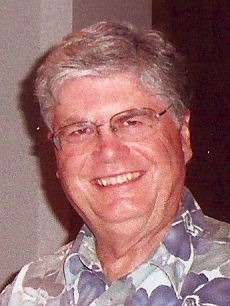President Obama’s promise to restore science to its rightful place raises a question regarding the National Institute of Standards and Technology (NIST). Is forensic science already well in hand, but just not the honesty to apply it? Soon, the nominee for the Secretary of Commerce, Gov. Gary Locke, goes before the Senate Committee on Commerce, Science and Transportation for confirmation. This position provides management oversight of NIST, among other things. Once confirmed, this person will select the new Director of NIST. The Senate should question Gov. Locke on his assessment of NIST’s past practices and intentions going forward.
Case in point is the NIST final report on World Trade Center 7, the 47-story high-rise that collapsed on September 11, 2001. The report’s authors explained in precise technical terms, the North side of the building (the side they were measuring) underwent a 2.25-second free-fall drop, extending approximately 8 stories. This agreed very closely with observations made during the opportunity for public comments. The whole process of requesting public comments to the draft final report, receiving them, and updating the final report where warranted was very commendable.
The problem comes with the NIST interpretation of the significance of this updated information. The NIST authors did need to make a comment, in that they stated in their draft report that the visible part of the collapse had accelerated downward at 40% of free fall. Their comment was in essence, when they looked at a longer period of time (5.4 sec.) encompassing this intermediary 2.25-sec. stage, then the three stages of collapse progression are consistent with the results of their global collapse analyses, i.e., their analytical model.
Their analytical model did not contain the mechanism for free fall. Yet, they called the overall results consistent with their model. NIST has not faced up to the significance of free fall. Is declaring the overall results consistent with their model the NIST way of sweeping the dirty implications of free fall under the proverbial carpet?
A free-fall drop of 8 stories raises the obvious question, what was going on with 8 stories of structure that allowed the upper visible section of the building to fall through it unrestricted? The NIST analytical model produces an answer that columns were buckling. In fact, it might be said, the theme of the NIST WTC7 Final Report [1] was fire and buckling. A search on the word, “buckling,” comes up with 42 times the word is used. Whereas, “free fall” only produces 6 matches, and all but one of those are in reference to the overall collapse being 40% slower than free fall, or the definition of free fall, itself.
The degree to which NIST has apparently tried to hide the 8 stories of free fall drop can be seen in the care taken to hide it on the NIST WTC webpage [2]. On that webpage, among items pertaining to WTC7, the link to the press release for the final report is listed first. This press release [3] lists a number of changes between the final report, and the draft final report issued earlier for public comments. Surprisingly, or maybe dishonestly would be a better choice of word, free fall is not even mentioned. In the Frequently Asked Questions (FAQ) section, there is one question on free fall. The answer given is essentially the same as given in the Final Report, but for one exception. In explaining Stage 2, which was the period during which free-fall occurred, the answer states, “During Stage 2, the north face descended essentially in free fall, indicating negligible support from the structure below. This is consistent with the structural analysis model which showed the exterior columns buckling and losing their capacity to support the loads from the structure above.” This makes it clear, and incorrect in doing so, that the consistency between the measurements and the model was during Stage 2. Whereas, the Final Report only claims consistency between measurements and model when the entire collapse time is considered.
The reason NIST is making such an effort to hide free fall is it strongly suggests explosives were involved. NIST did a superficial explosives study, referred to in the Final Report as “Hypothetical Blast Scenarios.” The study should be viewed with skepticism, in that it made the unreasonable assumption that any explosives would have to have been planted after the attacks on the Twin Towers, but before the collapse of WTC7. A very limited time frame, indeed. NIST just did not make an honest effort to consider an explosives scenario.
Whether at the Confirmation Hearings of Gov. Locke for Secretary of Commerce, or the Truth and Reconciliation Hearings of Sen. Patrick Leahy, these matters of questionable science and matters of dishonesty at NIST need to come out into the light of day. The public needs to know once and for all, what caused the destruction of WTC7.
(Note: You can view every article as one long page if you sign up as an Advocate Member, or higher).





